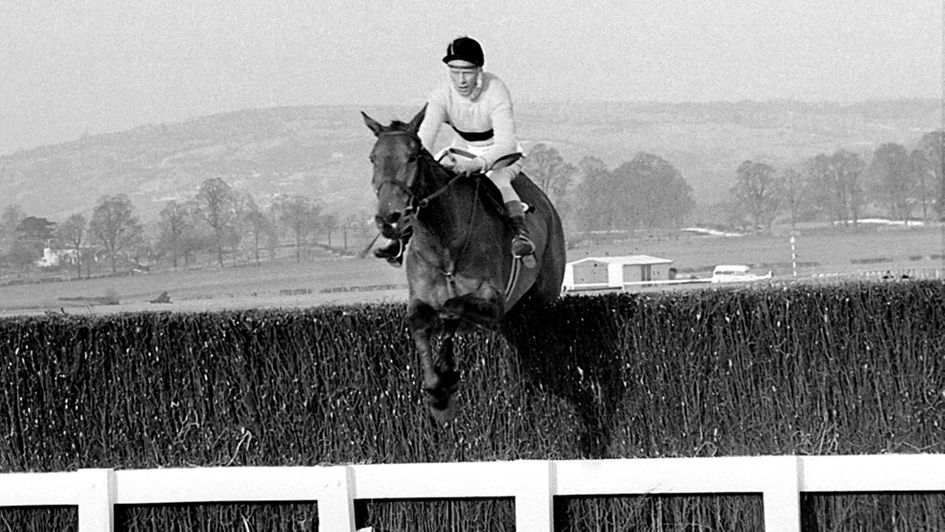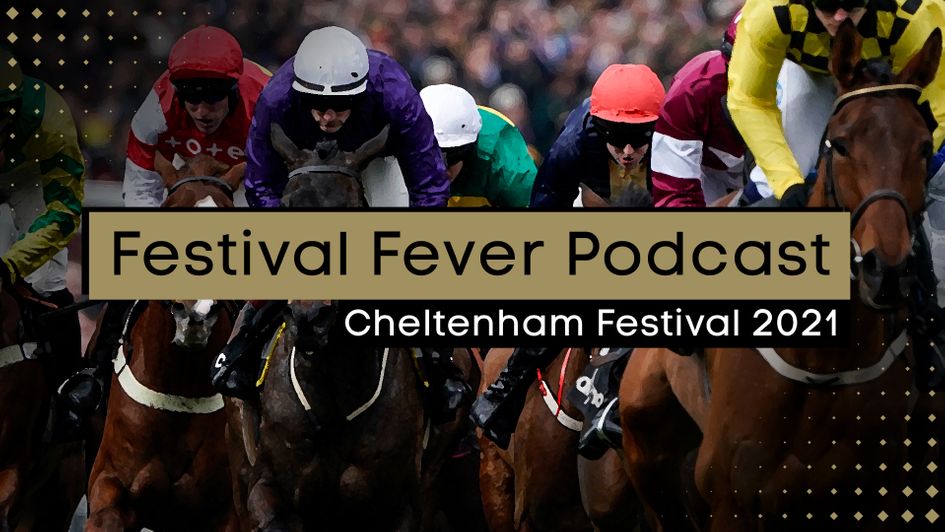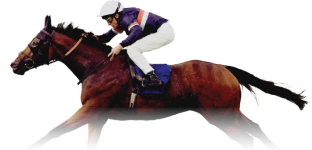There was much fanfare last year about the possibility of 12-year-old Faugheen winning a novice chase at the Cheltenham Festival, and in the end he ran a huge race to be third to Samcro and Melon.
Others have won championship events at Faugheen’s age, such as the Ryan Price-trained What A Myth in the 1969 Gold Cup and Brian Lusk’s Skymas, who landed the 1977 Champion Chase under a young Mouse Morris, but there has been only one 12-year-old to have landed a novice event at the meeting, and despite his story being a truly remarkable one, his name remains strangely forgotten.
It was the era of Arkle and Flyingbolt, the former winning his third Gold Cup at that Festival and the latter winning the Champion Chase just a day before finishing a gallant third in the Champion Hurdle (not bad for a horse who then won the Irish National over 3½m) and it’s understandable that those titans of the game take up most of the copy in reports of the 1966 Festival.
And yet it’s not Arkle’s three Gold Cups or Flyingbolt’s bold bid to win two championship races in 24 hours which was the most remarkable performance that year.
In terms of the sheer audacity of his success, the most astonishing story of the 1966 Festival was that of a horse called Beau Caprice, who took the first division of the Gloucestershire Hurdle, beating the Queen’s St Leger winner Aurelius by 15 lengths.
Like many winners of the race now known as the Supreme Novices’ Hurdle, Beau Caprice had only come into training the previous autumn, and had jumped his first hurdle on a racecourse in the middle of December. What set him apart from most other raw novices was his age. That racecourse debut came just a couple of weeks away from the black gelding’s 12th birthday!
Trained by Fulke Walwyn and ridden by the trainer’s conditional jockey Tommy Jennings, Beau Caprice looked every inch the future star when making all the running to land the opening race of the 1966 Festival, but he’d already had a remarkably full and eventful life before his owner, Captain Richard Head (now Viscount Head) decided to try him over hurdles purely as a favour to an amateur rider friend who was looking for a suitable mount.
Beau Caprice was bred as a prospective riding horse by farmer’s wife Pat Proctor in Hemel Hempstead, and was the only offspring of his dam Fair Flint, by the Hunter Improvement Society stallion Whim II.
He spent his first three years at his owner/breeder’s farm and was then sold to the eccentric Countess of Arran as a prospective hunter. He spent three seasons hunting with the Pytchley, Quorn, Cottesmore and Belvoir hunts where he gained a reputation for refusing unexpectedly at the smallest of obstacles, for all he was normally a bold ‘lepper’.
A young Life Guards subaltern, The Honourable Richard Head – son of Viscount Head, a cabinet minister in the in the administrations of Winston Churchill and Anthony Eden – enters the story at this point.
Posted on a two-year tour of ceremonial duties with the Household Cavalry, he was due to attend an equitation course in Melton Mowbray, home of Britain’s oldest and most celebrated hunt – The Quorn. Head needed a charger, which his regiment would provide, but he also wanted to buy a horse of his own to ride to hounds.
All Household Cavalry chargers must be black, so the opportunity of buying a horse of his own who could also double as his ceremonial charger was too good to be true, and he bought the then six-year-old Beau Caprice from Lady Arran for the princely sum of £250.
His new owner was delighted to take his purchase hunting with The Quorn in December 1960, but rather less happy when Beau Caprice refused the very first jump of the day. He did eventually overcome this tendency, but it was not a promising start for the prospective jumper.
Set to one-day eventing the following year, Beau Caprice showed promise, but also scant regard for show jumps, and he failed to trouble the judge despite some excellent efforts in the cross-country stages. The following winter was one of the most severe in living memory, and Beau Caprice was almost entirely idle, with not a single day’s hunting to cheer his owner.
Head tried his hand at combined training, but his mount again disgraced himself in the show-jumping phase, and his downhearted owner decided the best course of action was to sell him, but his only offer was from someone who wanted a showjumper for her daughter, which he rightly declined.
While stationed in North Africa, Head passed on the reins to his army equitation instructor, and the pair managed to win a novice military class event at Tweseldown. This unexpected success convinced him that the gelding was worth persevering with, but it wasn’t long before Captain Head was posted to Cyprus, where he came up with the idea to send Beau Caprice, already a 10-year-old, point-to-pointing the following year, and the horse was sent to Somerset to qualify for his hunter’s certificate.
Beau Caprice made a winning start to his career as a pointer, again at Tweseldown in February 1965, but while he looked an exhilarating ride from the front, and was bold at some of his fences, he was prone to blundering at others. His record at the end of the season read 1UFFF, although his falls all came when in a clear lead. Geoffrey Sale in his Hunter Chasers and Point To Pointers annual described him thus: “Can go a great gallop on any going, and is obviously very useful, but needs intensive schooling”.
A friend suggested that Beau Caprice might be worth trying over hurdles given the speed he had shown, and when Gerald Ward told Captain Head that he was looking for a suitable mount in order to ride in amateur races under rules, the pair agreed that Ward would buy a half-share in Beau Caprice and send him into training with a family friend.
Luckily for all concerned, the family friend Ward spoke of was the former champion trainer, Fulke Walwyn, who agreed to take the aged gelding on a month’s trial to humour his part owner.
In truth, Beau Caprice – nicknamed ‘The Hunter’ at Walwyn’s Saxon House Stables in Lambourn – was not expected to stay at the yard, but found some use as the trainer’s hack. One day he was thrown into a gallop with some of the yard’s more promising hurdlers, and Walwyn was astonished that the half-fit Beau Caprice could go with them easily. He told the owners that he’d keep the horse and that he had a race in mind at Wincanton in December, and so it was that Beau Caprice, a few weeks short of his official 12th birthday, made his debut under rules.
Beau Caprice, under Tommy Jennings, won that Wincanton novice, beating 33 others, and although beaten when ridden by his part-owner at Cheltenham next time (“led to 7th, droppd bck; r.o agn frm 2 out”), he built on that debut promise, and when he beat Arthur Thomas’s high class hurdler/chaser Rupununi back at Wincanton in February, he had booked his place in a division of the Gloucestershire Hurdle at Cheltenham in March.
At Cheltenham, Beau Caprice faced an intriguing rival in the shape of Aurelius, who had won the 1961 St Leger in the colours of the Queen, but had been sent hurdling having proved infertile at stud, and now sported the scarlet silks of Vera Hue-Williams. These two were to dominate the race, but the form book comment on Beau Caprice is blunt: “mde all: easily”. At the line he was 12 lengths ahead of Aurelius, to whom he was conceding weight.
He had little time to rest on his laurels, with Gerald West riding him in the Past And Present Hurdle for amateur riders at Sandown’s Grand Military meeting just five days later, where he finished a gallant third when favourite.
He failed to win again, but made the frame several times in competitive handicap hurdles the following season, including in the controversial Schweppes Gold Trophy won by Hill House. Beau Caprice was beaten a short head for second having made the running and been the only horse to throw down any sort of challenge to the facile winner.
A possible campaign over fences was mooted, but ready to turn 14, Captain Head decided to retire Beau Caprice, and he became his hack when he launched out on a successful training career of his own.
One Fleet Street hack opined after the race that Beau Caprice “has done everything in his long life except pull a tram”, but I’ll leave it to the late, great Lord Oaksey to put his famous Cheltenham win into finer context:
“For such a veteran to beat a St Leger winner in the Gloucester Hurdle comes as close to any result I have ever heard of to the fairytale fiction of National Velvet. Cap it if you can.”











